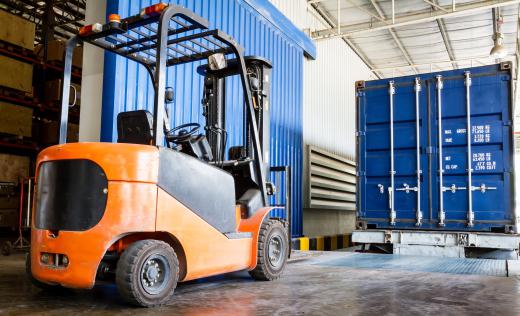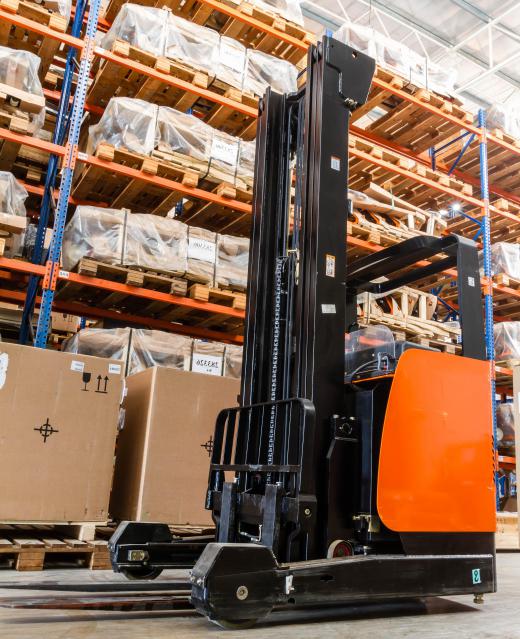A forklift battery is a device used to supply power to a motorized industrial vehicle. These vehicles feature a small cart equipped with a large set of tines, which are used to transport heavy objects through a warehouse or factory. Battery-operated forklifts are an effective alternative to the traditional combustion-powered lifts, which rely on fuels like gas and propane for energy. The forklift battery is considered a type of deep cycle battery, and can be run down to as low as 20 percent of its full capacity. This type of battery is also used to power golf carts and other large machines.
Battery-operated units offer a number of advantages over traditional fuel-powered forklifts. Unlike gas or propane, batteries can power a forklift without producing hazardous fumes. This results in better indoor air quality and fewer health risks for workers. A forklift battery also allows the unit to be operated with less noise, and enables manufacturers to build smaller and more nimble forklifts.

Buyers can choose from three basic types of forklift battery, depending on how and where the battery will be used. Lead-acid units are the most common, and offer a solid combination of power and affordability. Nickel-iron batteries tend to last the longest, but are also the least efficient. This means that they cost more to charge, and lead to wasted energy consumption. Nickel-cadmium units are by far the most expensive, but may be the only viable solution in extremely cold areas, where other batteries tend to perform poorly.

A forklift battery must be recharged regularly to ensure it can power the lift throughout the day. Like all battery-charging operations, this process can be dangerous due to the hazardous fumes generated during charging. These fumes can be harmful to the health, and also pose risk of fire or explosion. To minimize risk, battery-charging areas should be fully ventilated, and workers should wear protective gear when working in this area. Removing the battery from the charger as soon as charging is complete can also help reduce risk.
Forklift batteries are very heavy, and workers should not attempt to move them by hand. Instead, the company should invest in a battery cart or lift, which is designed to move the battery back and forth between the charger and forklift. These batteries must be maintained regularly to remove corrosion and keep water at sufficient levels within the unit.
